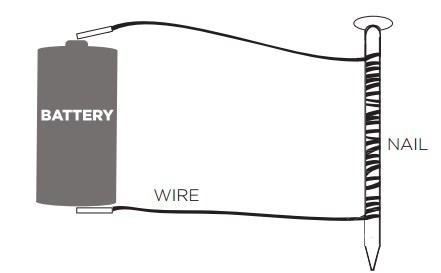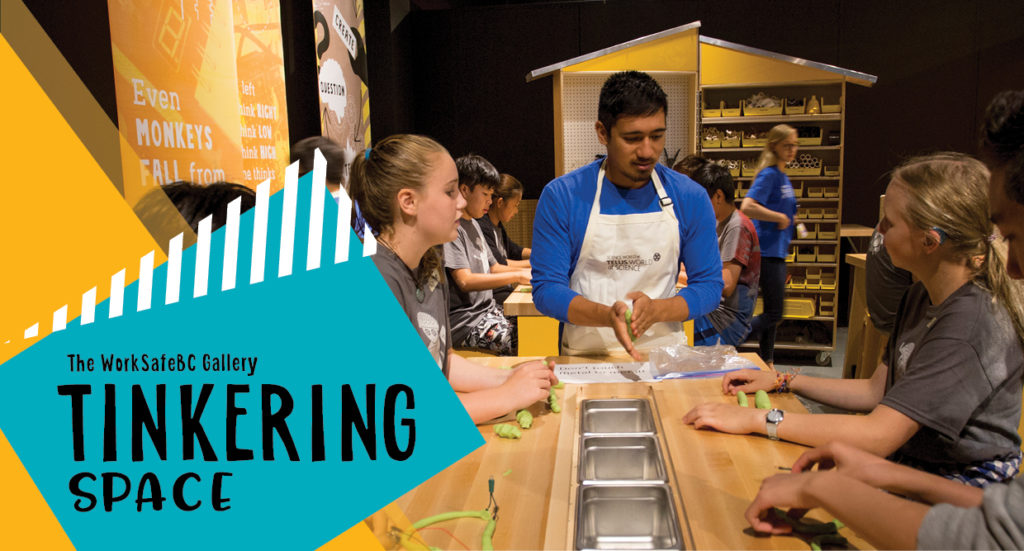In this activity, students learn about the relationship between electricity and magnetism by creating and experimenting with their very own electromagnet.
After making the magnet, they can explore how it works by making modifications to the number of batteries, the length of wire and number of loops, and the type of core used.
Electricity and magnetism are linked phenomena.
Moving electrons always create a magnetic field. Electrons moving along a wire make a magnetic field that goes in circles around the wire. When you bend the wire into a coil, the magnetic fields around each loop of the coil add up to make a long , thin magnet with north at one end and south at the other. The more loops the coil has, the stronger the magnetic field, while the current is flowing.
A magnet made from just a coil of wire isn't very strong. But when you coil the wire around an iron nail, the magnetic domains inside the nail line up and make a strong, temporary magnet. If you disconnect the wire, the magnetic field disappears and the nail is no longer a magnet.
If you leave the wire connected long enough, the nail's magnetic domains will realign enough to make it a permanent magnet. But be careful! The current flowing through the wire makes the wire hot and drains the battery quickly.

